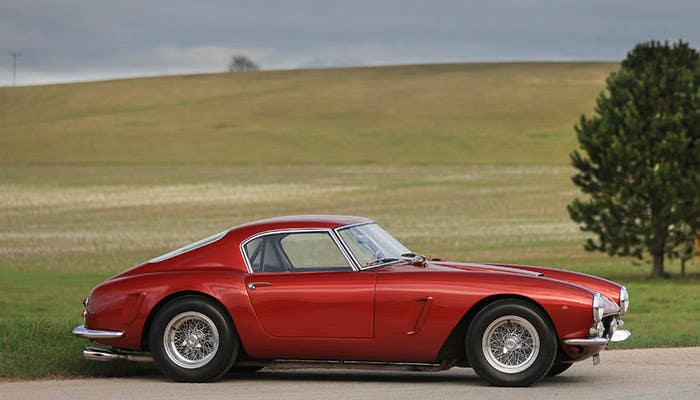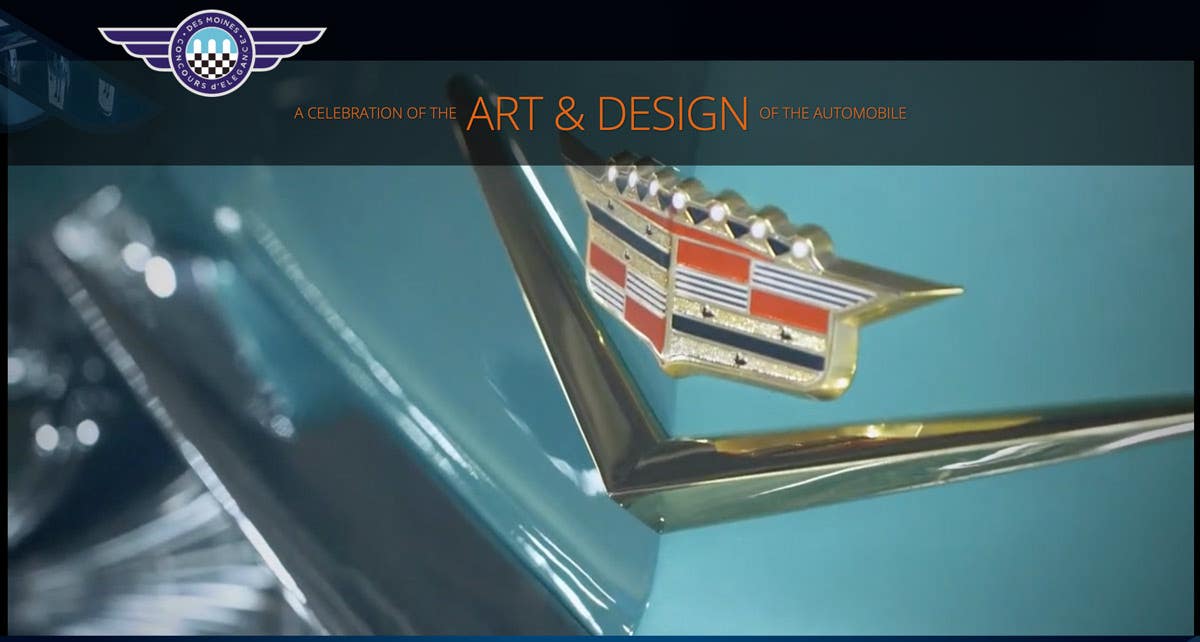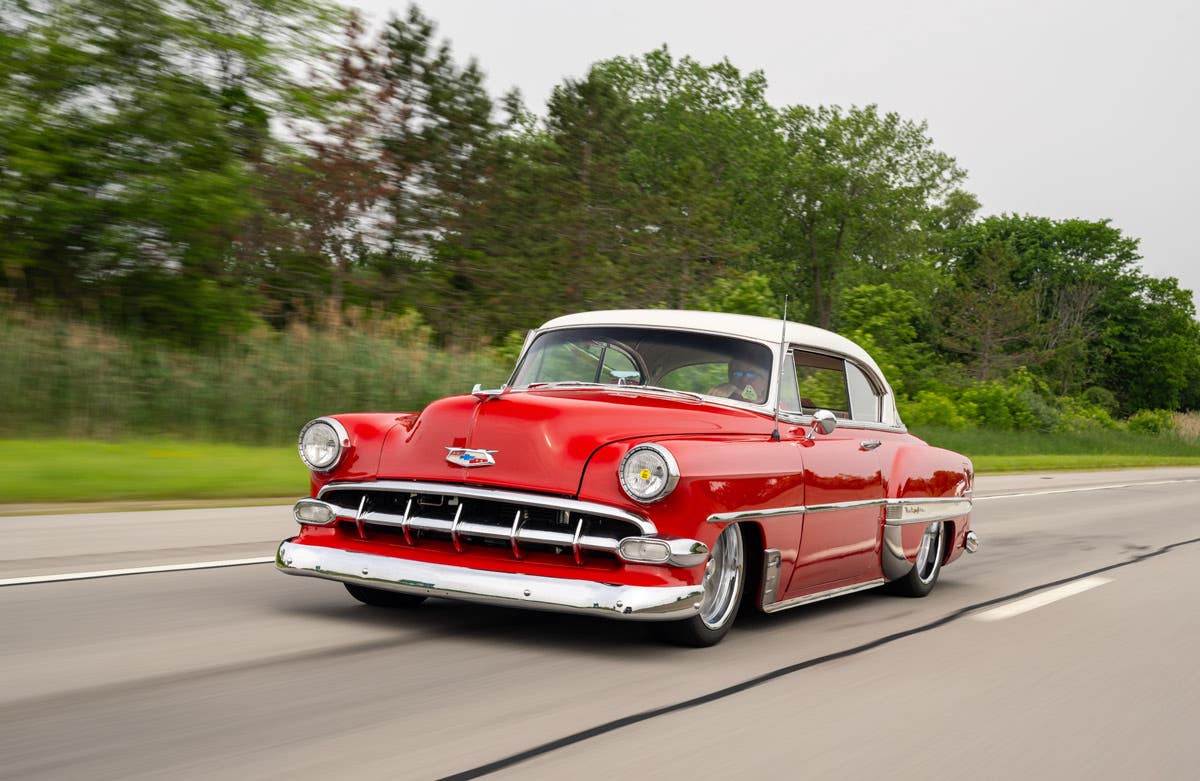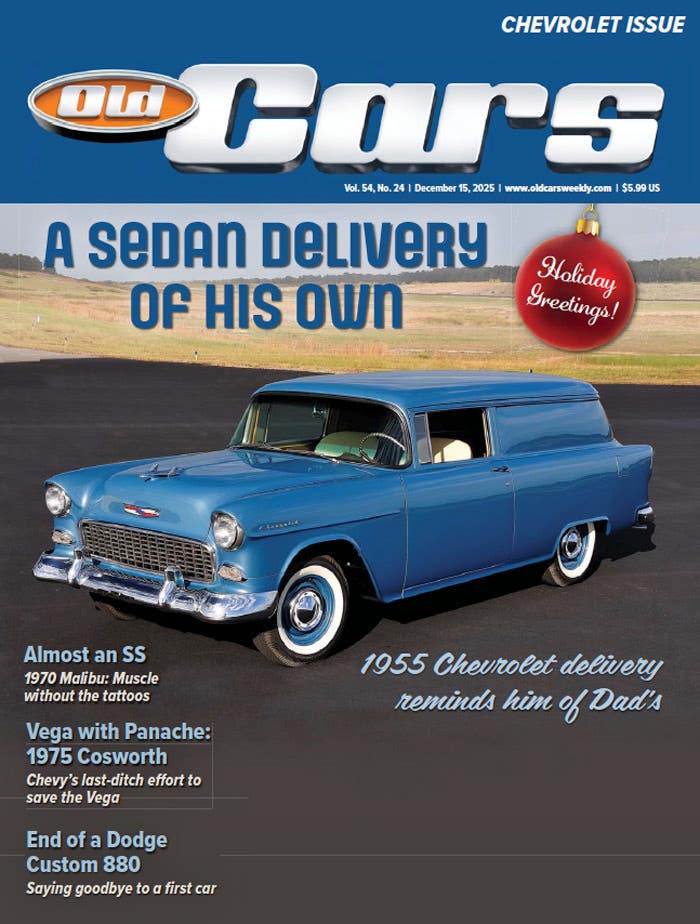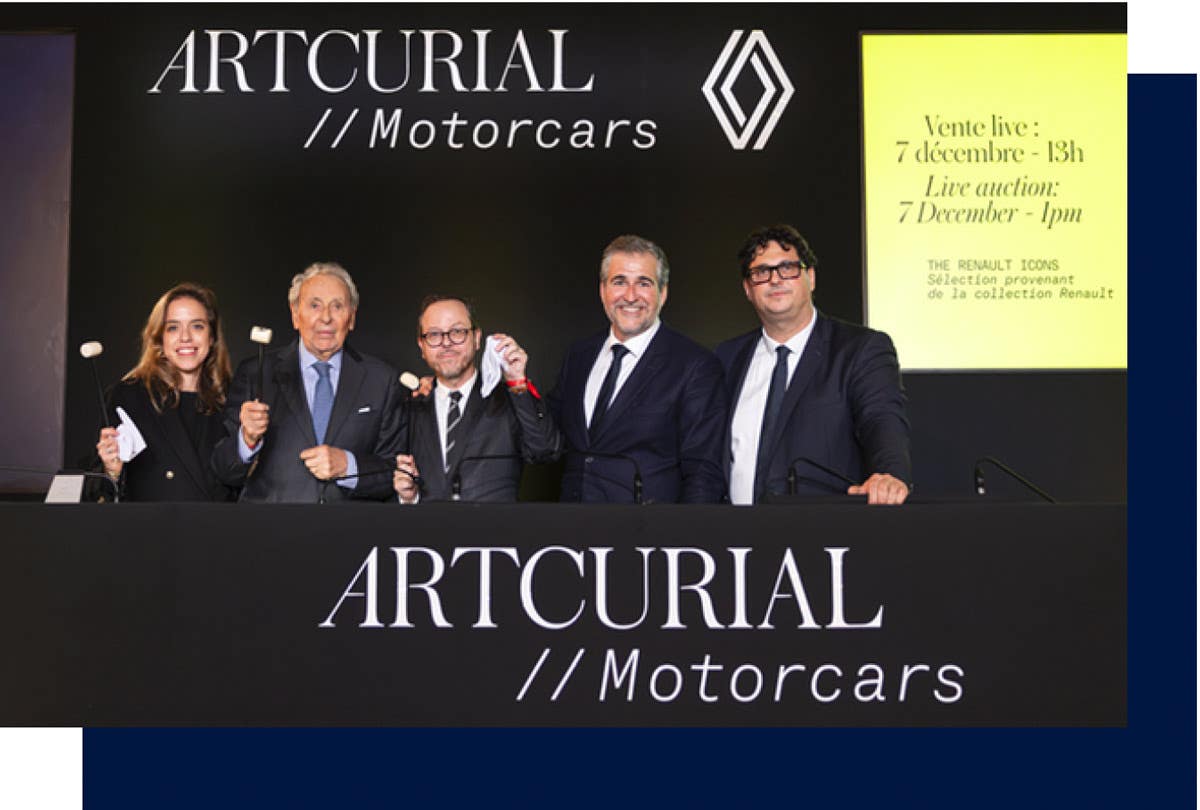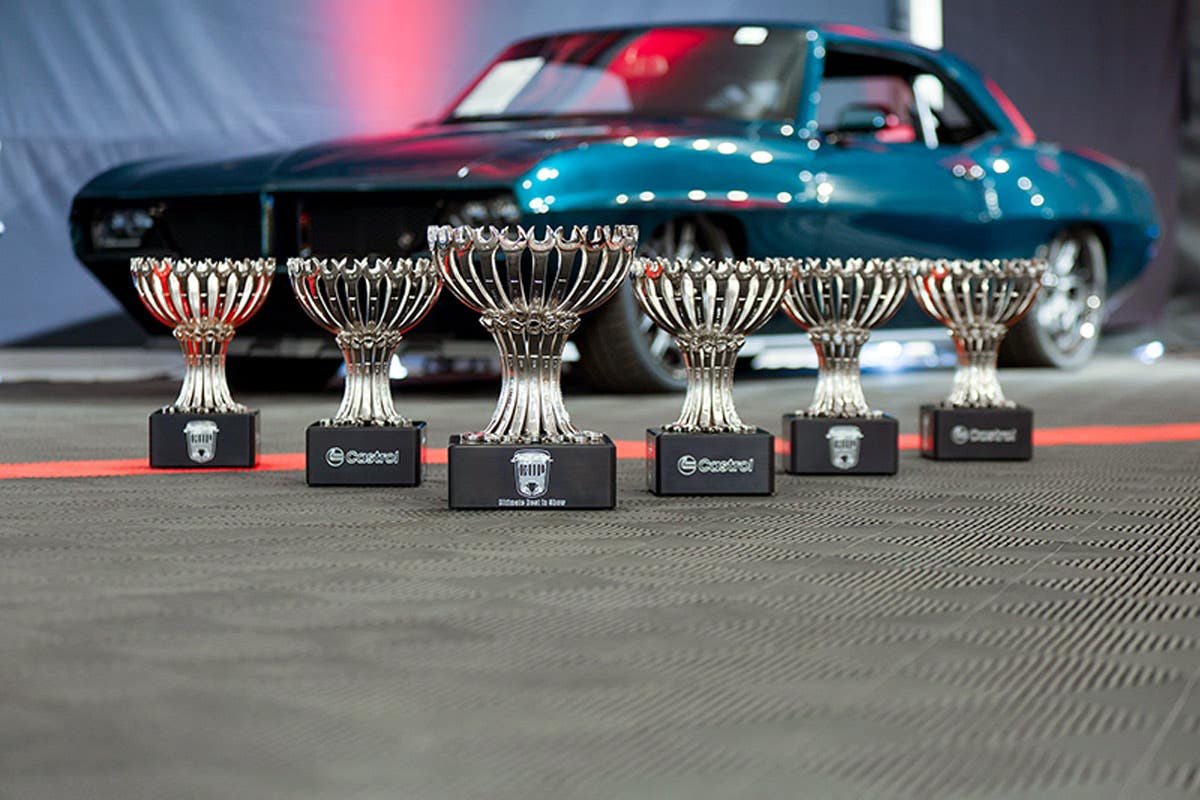Sixties Swingers: Special ’63s celebrate 50 years of cool
It’s hard to say why the industry peaks in certain years with design and engineering trends, but there’s little doubt 1963 was a time for special cars.
By John Gunnell
Several 1963 American cars broke new ground for the auto industry in styling, equipment and technology. Three particularly “classic ’60s” designs came from Detroit styling studios that year: the Buick Riviera designed by Bill Mitchell, Raymond Loewy studio’s Studebaker Avanti sports car and the Corvette Sting Ray that Bill Mitchell dreamed up during a fishing trip. To sweeten the pot, the Sting Ray of ’63 had a one-year-only “split-rear-window” styling triumph.
All three of these iconic designs were fashion hits in an era that generated passion for all two-door sports-personal cars, such as the Ford Thunderbird, Oldsmobile Starfire, Studebaker GT Hawk and Pontiac Grand Prix. Sportiness, luxury and performance in glitzy packages held strong appeal for “jet setters” of the early ’60s. Bucket seats and floor-mounted gear selectors were all the rage. Buyers wanted racy cars with something-special looks with potential to draw stares.
Important manufacturing innovations of 1963 included a Riviera rear window that needed no weather stripping. AMC started stamping Rambler door frames out of galvanized steel. The Corvette revived retractable headlamps and Pontiac adopted a new bake-sand-bake painting process. The venerable Chevy received a cast-iron crankshaft with seven main bearings and started a new trend.
Aluminum engines didn’t fare well. Pontiac dropped its alloy V-8 and Chrysler discarded its aluminum Slant Six, but the “cubic inch race” continued and the number of cars built with 144- to 200-cid engines fell 26 percent. In contrast, the number of cars with engines displacement greater than 400 cubic inches doubled the figure of 1961. Chevy installed 3,670 409s, Pontiac turned out 3,670 big 421 cars, Chrysler Corp. produced 2,130 wedge-head 426 machines and Ford shoe-horned 4,978 of its 427-cid high-performance V-8s into engine bays.
With the U.S. economy picking up steam, the compact cat market began to shift in an important way. Overall sales of compacts were up, largely because car sales were up in general. There were now 11 compacts from which to choose: Chevy II, Corvair, Tempest, F-85, Special, Falcon, Comet, Valiant, Dart, Rambler and Lark. However, market share for compacts declined from 35.2 percent to 32.9 percent, although sporty compacts were selling better. Sales of small two-door hardtops were up two percent and compact convertibles sold nearly 12 percent better. This is the trend that Ford’s Mustang tapped into.
Many small engineering refinements of 1963 were important: Cadillac’s five-joint drive shaft — which had one single joint and two double joints — gave a smooth ride, even if a slight misalignment developed. Olds mounted its V-8 flatter and farther ahead to reduce the height of the drive tunnel and increase roominess. The trend towards floor shifts and consoles turned many coupes and convertibles (and a few sedans and wagons) into five-seat cars.
Many of the year’s advances in automotive styling and technology were summed up in the three iconic designs of the year, which were all sports-oriented, powerful two-door models. They led the pack and we’ll look at each of them below.
Riviera: Iron fist in a velvet glove
Buick used the Riviera name on its early postwar hardtops when it described its two-door hardtop as a “Riviera Coupe.” When the four-door hardtop arrived in 1955, it was called the Riviera Sedan. The all-new ’63 Riviera came only as a hardtop coupe, and it was far different than earlier Rivieras. For one thing, instead of being just a unique body style, it was a totally unique car. It also brought leading-edge design to Buick for 1963, which also helped change the entire image of Buick Motor Division during the period.
The Riviera began as an effort by GM styling chief Bill Mitchell to revive the LaSalle, a Cadillac companion car built from 1927-1940. The LaSalle is famous for being the first car to come out of GM’s Art & Color design studio. In 1955, Buick stylist Ned Nickles — the father of the fabulous ’53 Skylark — designed an experimental LaSalle II. Around the same time, public reaction convinced GM that it needed a sports-personal car to compete with the Thunderbird. The development program was assigned to Buick and the Riviera name was selected to replace LaSalle.
Mitchell was a great talent in car design, and the Riviera was among his crowning achievements. With its Rolls-Royce-like, razor-shape body lines, the Riviera had a hint of classic styling that blended perfectly with up-to-date motifs such as a long hood-short deck configuration and restrained use of bright metal trim. It was also one of those iron-fist-in-a-velvet-glove cars with Buick “nailhead” V-8 power under its hood. The first Riviera could get through the standing-start quarter-mile in 16 seconds and looked great doing it. In addition, it handled well, too.
The Riviera came in one model priced at $4,333 and weighing slightly less than 4,000 lbs. It had a 117-in. wheelbase and was 208 in. long. The base 401-cid V-8 produced 325 hp. It pushed power through a two-speed Turbine Drive automatic transmission. Standard equipment included front and rear bucket seats, a console, deep-pile carpeting and a smoking set. The Riviera was aimed at affluent buyers, and only the Electra 225 convertible cost more with a price tag $35 higher than that of the Riviera.
Sting Ray: Sea creature-inspired
The ’63 Corvette Sting Ray was all new and an evolution of the Mitchell Sting Ray race car. Bill Mitchell replaced Harley Earl as head of GM styling in 1958. He thought it was important to race the ’Vette and persuaded Chevy general manager Ed Cole to sell him the 1957 Corvette SS “mule” chassis, which he obtained for just $1. Mitchell then had designer Larry Shinoda create a manta ray-inspired body for it, which influenced the production 1963 Corvette.
“Oohs” and “aahs” went to the new “split-window” Corvette fastback coupe. Shinoda created the “split-window” that Mitchell loved, although chief Corvette engineer Zora Arkus-Duntov was dead set against the vision-impairing feature of the design. Zora eventually had the split-window canned before the 1964 model year, so it was offered just one year and remains collectible.
On both ’Vette models (there was also a convertible model), the front fenders had two long, non-functional louvers resembling brake cooling ducts. The rear deck resembled that of the ’62 model, but the rest of the car was totally different. Hide-away headlamps were housed in an electrically operated panel and enhanced the car’s aerodynamics.
Firsts for Corvette in ’63 included optional knock-off wheels, air conditioning and leather seats. Four engines based on the 327 offered 250, 300, 340 or 360 hp. The 360-hp job had Rochester fuel injection.
Avanti: Design that survived its maker
The Studebaker Avanti was conceived as a way to save the South Bend, Ind., automaker. Industrial designer Raymond Loewy was responsible for guiding a team of talented designers in their effort to produce a Euro-styled Grand Touring car that could change Studebaker’s stodgy ’60s image. Studebaker president Sherwood Egbert asked for a closed four-seat model with an aerodynamic shape. He got a milestone design that survived the company.
Loewy hadn’t worked for Studebaker since his 1956 redesign of the Hawk series, so he gathered designers John Ebstein, Robert Andrews and Tom Kellogg at a house in Palm Springs, Calif., and wrote a new chapter in automotive styling history. What his crew came up with was a startlingly different look that literally stopped people in their tracks. The Loewy group’s scale model went to production with nearly no changes from his design.
In profile, the body of the car resembled a horizontal Coke bottle: narrow in front, bulging over the front wheels, then tapering in the center and flaring out at the rear. It had large glass areas and a flat roof with a built-in roll bar. The front fenders were angular with flat edges. There was no grille. The front consisted of V-shaped flat panels that slanted forward at the bottom and carried large headlamps in large, square, bright-finished housings. The hood had an asymmetrical hump. Inside were four bucket seats in an aircraft-like interior layout with lots of crash padding. The look was light and functional.
Three engines were offered for ’63: the base R1, the supercharged R2 and the seldom-seen and expensive R3. The R1 was a respectable, if somewhat unexciting 280-cid, 240-hp V-8. The highly promoted R3 was rare. The R2 was readily available and only $210. While it lacked the brute force of other muscle cars, the use of a small, supercharged V-8 and the clever use of existing Studebaker parts created a car with fast acceleration and great handling.
The Avanti received a publicity boost from a successful assault on existing American speed records. In August 1962, an R3 established several new marks including a 168.15-mph two-way Flying Mile. Early in ’63, a near-stock four-speed R2 averaged 158.15 mph through the measured mile. Road and Track reported a 7.3-second 0-to-60 mph time for the four-speed R2. In addition to being fast, the Avanti was rare. With a model-year run of just 3,834 units, Studebaker’s sports-personal car was a true limited-edition vehicle.
Stars of ’63 50 years later
Now we have reached the 50th anniversary of these iconic 1963 model cars. They are designs that made the fourth year of the ’60s stand out in automotive history much like the earlier years of 1903, 1932, 1940, 1955 and 1957. It is hard to say why the industry peaks in certain years when design trends and engineering developments converge to spurn the creation of great automobiles, but there’s little doubt that 1963 was a special time for special cars.
Got Old Cars?
If you don't subscribe to Old Cars Weekly magazine, you're missing out on the only weekly magazine in the car hobby. And we'll deliver 50 issues right to your mailbox every week for less than the price of a oil change! Click here to see what you're missing with Old Cars Weekly!
More Resources for Car Collectors:
- Classic car price guides, research, books, back issues of Old Cars Weekly & more
- Get expert restoration advice for your classic car
- Get car pricing, data and history all in one place
- Sign up for Old Cars Weekly's FREE email newsletter
- Need to buy or sell your classic car? Looking for parts or memorabilia? Search our huge online classified marketplace
________
HOT OFF THE PRESS!
Restoration advice and how-to projects for your collector car!
In this car restoration guide, the staff of Old Cars Weekly opens the shops of several prestigious restoration businesses to show how the professionals and experts bring cars back to show-ready condition. From simple projects to detailed engine rebuilding work, Old Cars Weekly’s Auto Restoration Guide has something for all levels. Check it out
________
Standard Catalog of American Cars: 1805-1942
This is the only book with detailed histories behind the 5,000 automobiles built from 1805-1942, most illustrated with period photographs. This extremely desirable resource covers all of the well-known and little-known vehicles built during this period, including steamers, electrics, motor buggies, high wheelers, cyclecars, high-volume production cars and one-offs among its 5,000-plus entries. Check it out



